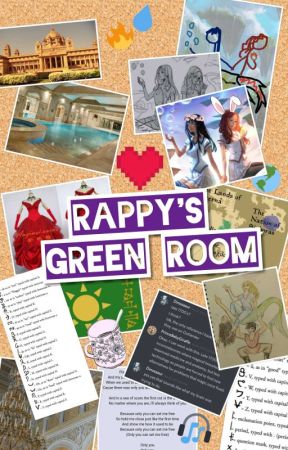There is no preamble or idle chatter at the beginning of today's lecture. The professor simply takes his place at the podium with a grim expression, opening a massive and well-worn tome with a tired sigh.
"I hope you're all prepared to take notes," he says before diving right into the lecture:
__________________
Modern Keldan, called Ba'Kelda'diteki when spoken between 1PM and 9PM is, in the words of renowned Luminous linguist Alec Garvasti, is "three shitshows stitched together into one bigger, more horrifying shitshow with a clusterfuck thrown in for spice."
It is spoken by the merfolk tribes in the seas to the north of Lumina, with highly extant variants shared among merfolk in other areas far from the Realm Under Twin Shadows. It has no common script, having developed in an environment where writing was nearly impossible; while on land, merfolk scribes generally use a personalized script from another language, making any necessary modifications to accommodate the distinctions in sound and grammar.
The earliest known ancestor of Modern Keldan was a language termed Ancient Keldan spoken by merfolk tribes in the seas surrounding the continent of Siaboras. Over time, three groups of merfolk emerged based on their interactions with the continental species: those who interacted with the demons, who spoke Tevkal, those who interacted with Siaborean angels, who spoke Halcyan, and those who interacted with the vampires, who spoke Shessnavaen. In addition, numerous deep-sea tribes maintained a dialect of Keldan without loan words.
As such, three creoles of Ancient Keldan eventually emerged along with a separately developed dialect without foreign loan words or foreign word orders. After the disaster that destroyed Siaboras, however, merfolk colonizing the newly uninhabited waters found a need for a language in common, as their distinctive creoles and dialects had become mutually unintelligible.
In order to maintain their culture and honor their fallen allies in Siaboras, an unusual accord was reached: the day was broken into three parts. From approximately 0500 to 1300 the language became more similar to Halcyan, adopting an OSV word order, using tonal shifts for verb tense borrowed from that language in favor of Keldan particles, and losing the use of personal pronouns.
From 1300 to 2100 the language more strongly resembles Tevkal, including a VOS word order, agglutinative tense and person markers in favor of Keldan functional counterparts, and specific articles indicating importance for nouns.
From 2100 to 0500 the language is closest to Shessnavaen, with fusional case markers for nouns in place of Keldan case particles, SVO word order, and the adoption of the five grammatical genders for nouns (generally by language of origin rather than any phonemic quality to the word itself.) All of these languages were applied and combined with a Keldan base which shared no historical similarities with them.
As a result of these and other linguistic quirks to be covered shortly, the Modern Keldan language to surface dwellers appears an enormous morass of near schizophrenic grammatical constructions, arbitrary distinctions that muddle meaning, and random word root selections. The language also possesses the record for sheer number of phonemes (sounds which distinguish meaning) in any language, though Noxian has more distinct vowels. This aspect is useful in an underwater environment where echoes are common and might confuse repetitive sequences of words.
Furthermore, surface species rarely understand that the cycle of Halcyan-Tevkal-Shessnavaen reinforces time cycles in the deep and provides an easy way to assess sound travel when the water is of differing temperatures. This aspect of undersea communication is also apparent in a strange aspect of Keldan tense: though the language is happy to borrow those structures from other languages, verb tense does not distinguish time, as in other languages. Rather, tense indicates the spatial position of the speaker, with an additional tag indicating recipients as well, separate from the verb.
This allows merfolk speaking underwater to unconsciously account for changes over distance, depth, and temperature/density underwater, as the verb forms will indicate biome and depth all at once. An unintentional effect of this phenomenon is difficulty interpreting Keldan oral histories and texts by non-merfolk scholars.
Due to the incomprehensibility of the Keldan language, many merfolk have found work as codebreakers and cryptographers, as frequently translating a message into Keldan is sufficient to conceal its meaning from all but the most dedicated of scholars. Codes for Keldan messages are nearly impossible to crack for nonnative speakers, a fact which many of the best code makers have exploited to great effect. Through those individuals and their historical antecedents, Modern Keldan has obtained a dual use as communication and tool of concealment in the modern age of the Shadow Realm.
_______
Sample Words (do not ask me how to pronounce any of these.)
Ahff!áchu: literally translated 'shark food', but a colloquial term for someone who doesn't know how to swim
Vraelihte'io: the shock fading to amusement one feels up learning that most Igneans are terrified of the ocean
Jarhoch: a group composed of no less than seven but no more than eighteen ducks
'eno: The only grammatically correct way to address one's maternal grandmother's brother in the morning, assuming that he and one's maternal grandfather have not attacked each other with spears in the past two years
Kurki: one of the more popular ways to say 'idiot,' derived from the surname of a Luminous noble who 250 years ago first attempted to sell cigars to Keldan merchants
Naavo: Formal term for 'angel,' colloquial term for 'prude'
_________
Joe put this together for me a while ago now and I completely forgot to put it up, so here you go. Have fun with this nightmare language!

YOU ARE READING
Rappy's Green Room
RandomTimelines, family trees, moodboards, playlist breakdowns, fan art, fan fiction, Q&As, basically anything and everything to do with my writing besides the stories themselves. This will include material from The Lumina Chronicles, The Elemei Saga, and...
